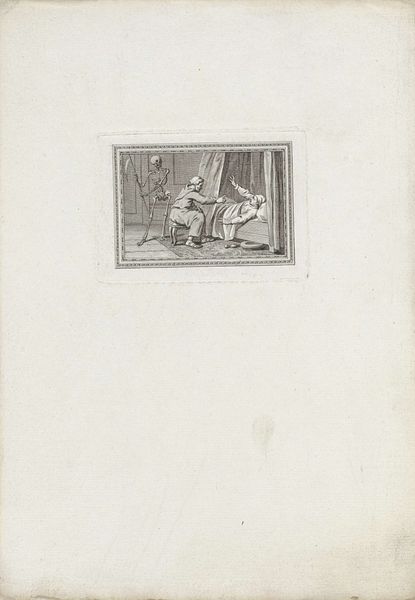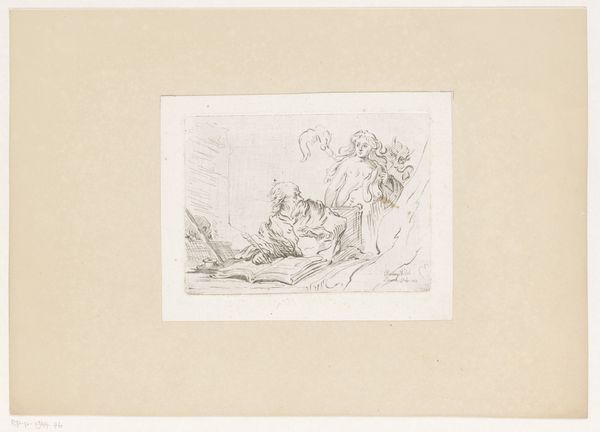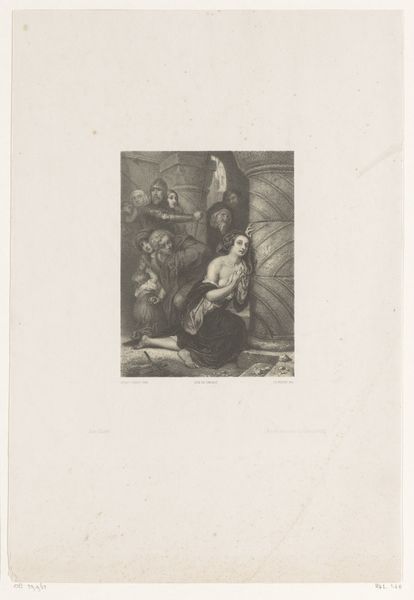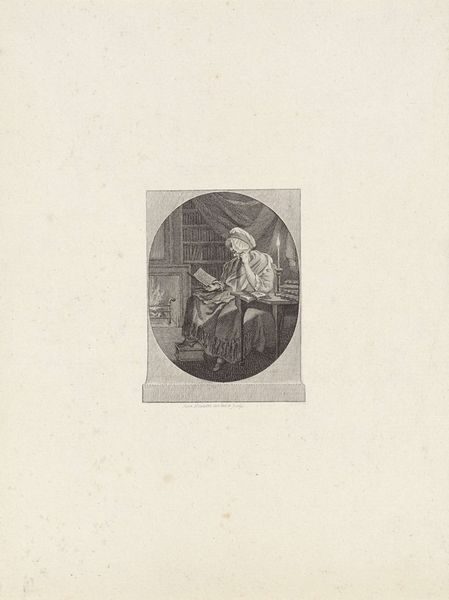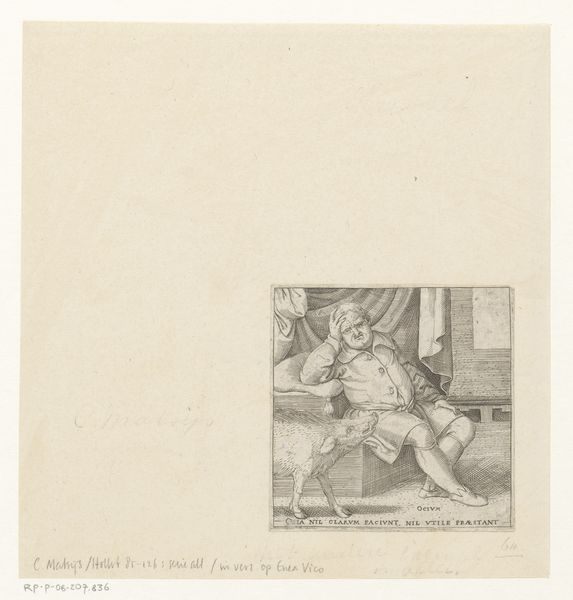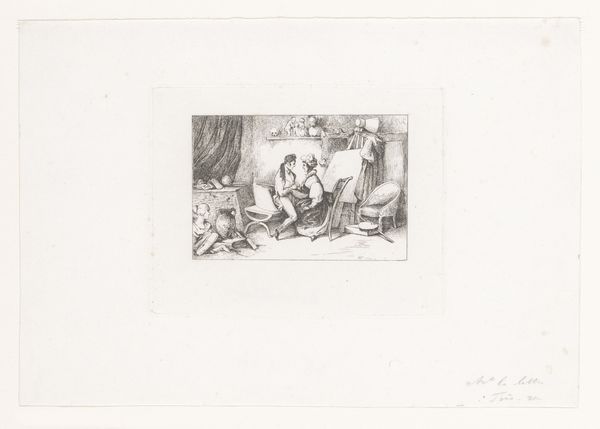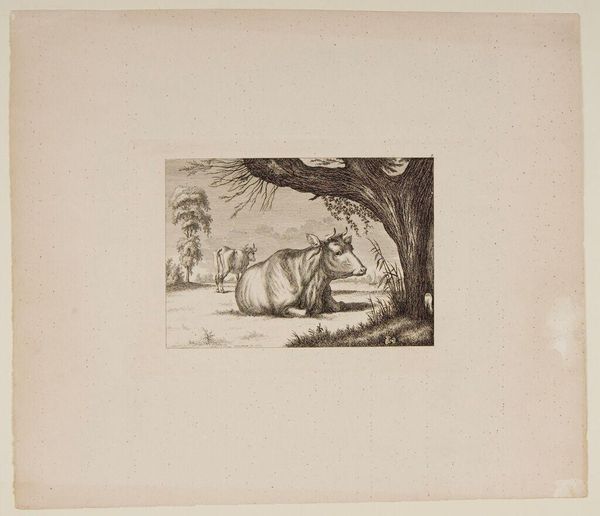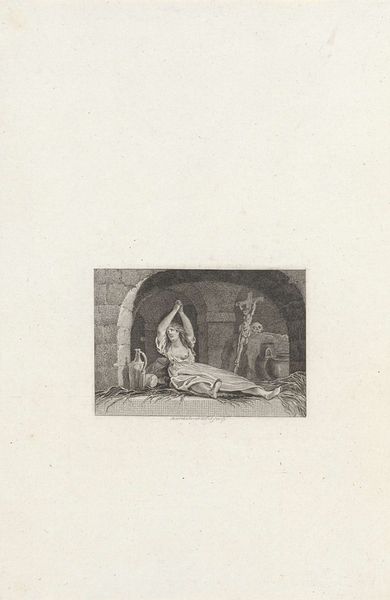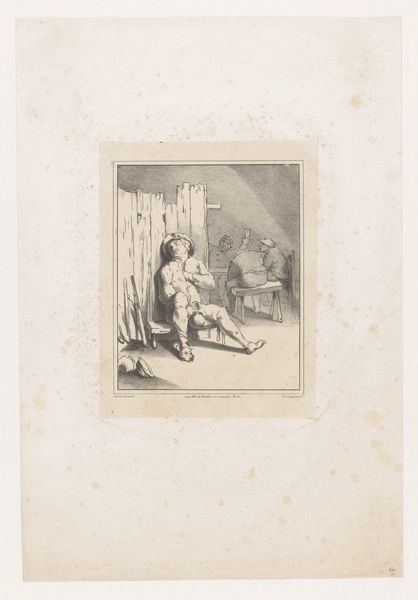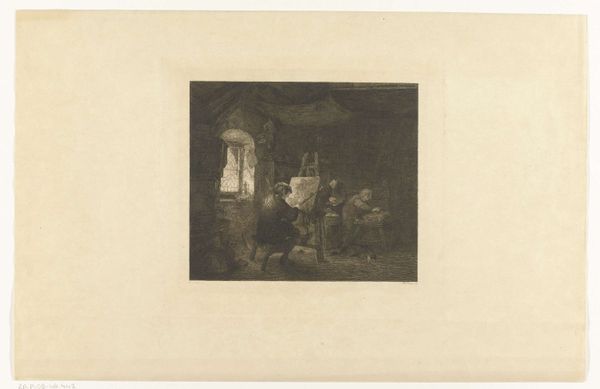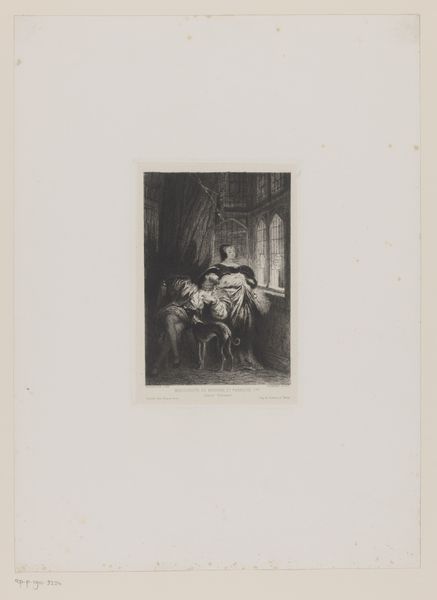
Dimensions: height 65 mm, width 80 mm
Copyright: Rijks Museum: Open Domain
This is "Romeo en Julia," made by Arnoud Schaepkens. It's a print, meaning the image was incised into a metal plate, inked, and then transferred onto paper. The nature of the medium strongly affects the image. Here, we see Schaepkens's reliance on the vocabulary of line: hatching, cross-hatching, and contour. Notice how these are used to describe the folds of Romeo's garments, the texture of the floor, and the solemn drama of the scene. The image's tonal range is also dictated by the medium: a full spectrum of greys, from light to dark, is achieved by varying the density of the engraved marks. Printmaking has always had a close relationship to commerce. It is inherently reproducible, allowing images to be widely disseminated, and as such, has historically been a means for both artistic expression and income. Considering all the steps that are involved in this kind of work, we can see how much labor is involved in its production. This reminds us that what may seem like a minor work is in fact the result of a skilled practice.
Comments
No comments
Be the first to comment and join the conversation on the ultimate creative platform.
